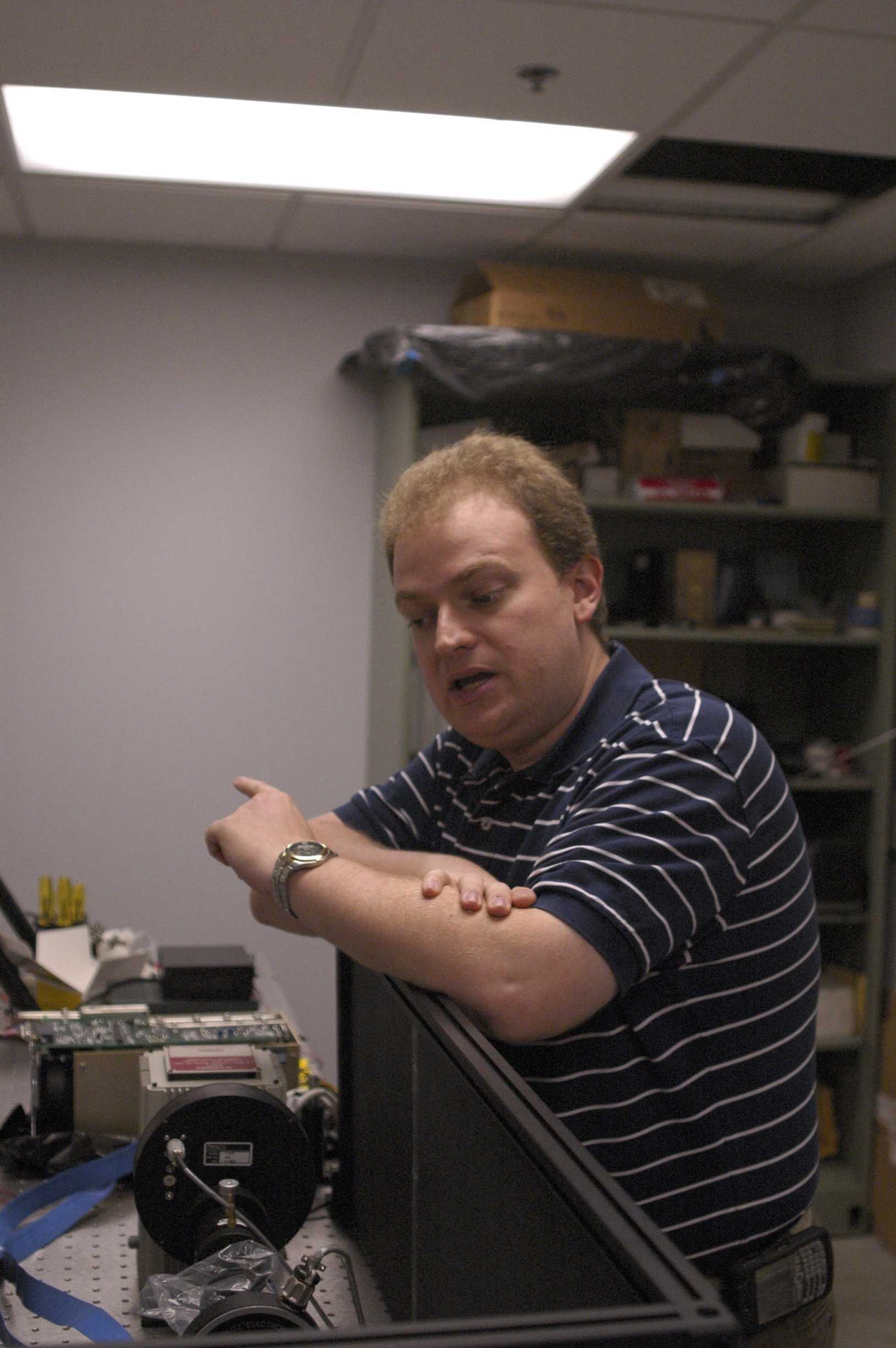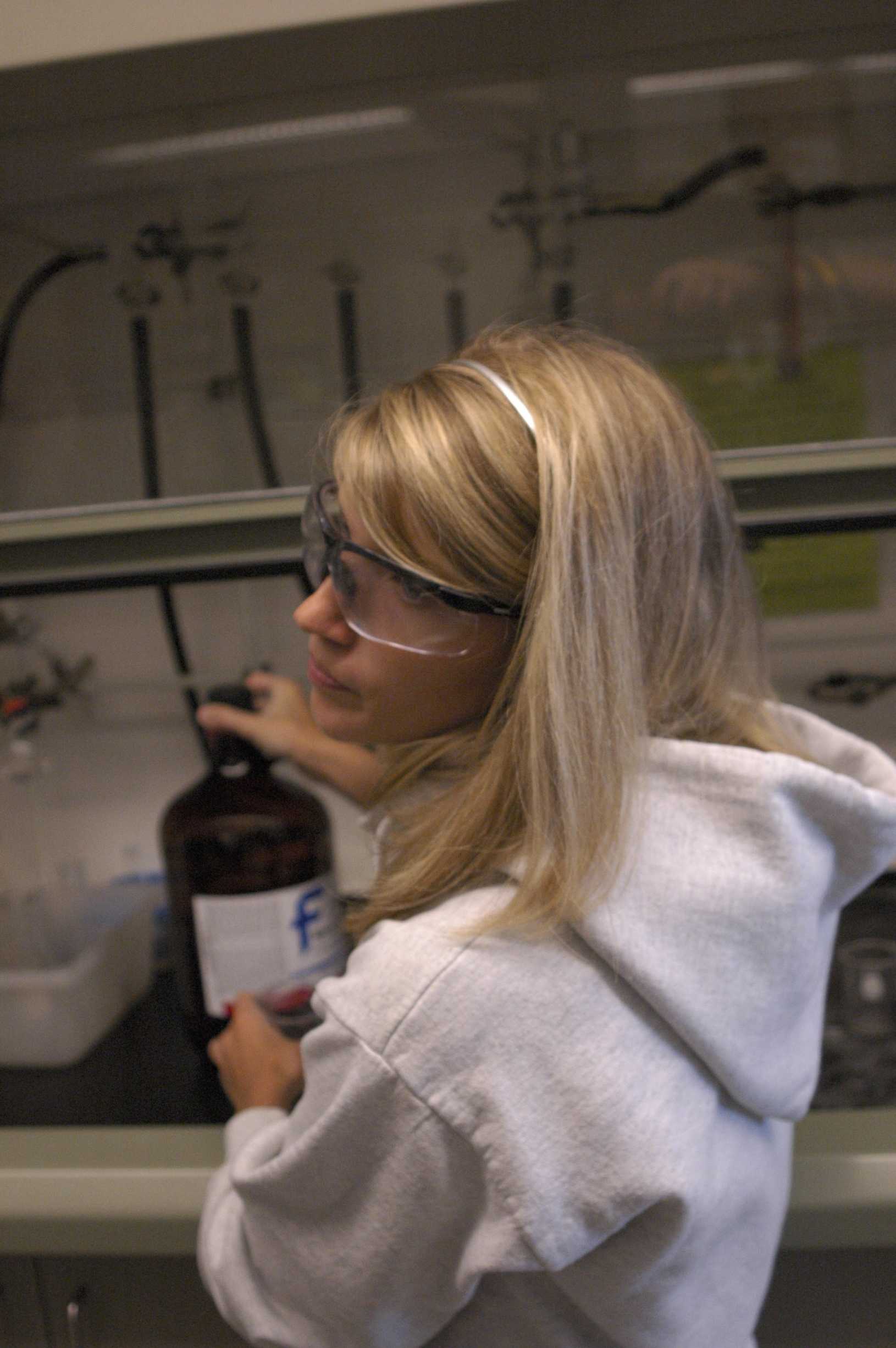 Photo by Mark Payne/The Northerner
Photo by Mark Payne/The Northerner Photo by Mark Payne/The Northerner
Photo by Mark Payne/The NorthernerDr. Keith Walters likes talking science. The soft-spoken’ associate chemistry professor can talk at length about what his research group is doing to develop advanced supramolecular systems.
His group is composed entirely of Northern Kentucky University undergraduate students, with all research performed by students under his guidance.
The National Science Foundation (NSF), with funds approved through the American Recovery and Reinvestment Act (ARRA) of 2009, the NSF awarded Walters’ $120,000 for research, advancing this complex branch of science.
Walters said it was tougher this year to get funding, even though the NSF received $3 billion from the ARRA.
‘As soon as it went out that NSF got ARRA money, the number of grant applications went through the roof,’ Walters said.
He explained the process of applying is long, and drawn out.
‘The important thing is that you get your foot in the door with the people in Washington who look at these grants,’ he said.
The funding is crucial for student research, and Walters feels lucky to receive the funding.
‘Chemicals are expensive,’ he said. ‘It’s always very important to have some mechanism of external funding.’
He explained there are plenty of areas for students to get funding, but it’s usually in smaller amounts – around $500.
‘That might sound like a lot, but when I buy a single chemical sometimes that’s $200 bucks,’ he said.
Walters said it’s also tough for students who want to participate in research, but have other jobs and responsibilities.
‘I always have students who want to get involved, but real life gets in the way,’ he said.’
Different type of research university
When it comes to research, NKU is different from larger research institutes, such as the University of Cincinnati, because the opportunity for undergraduate research is available through groups such as Walters’. Typically, most research is offered to graduate students.
‘NKU’s mission is a teaching institution. That’s never going to change,’ Walters said. ‘That’s a big thing for those of us at an institution like this, but still believe in research. We believe in research as an excellent teaching tool.’
Although the research at NKU will most likely not compete with the research of the University of Cincinnati, he said that’s not the point.
‘That’s not to say that we can’t do really cool research here,’ he said. ‘But it’s not going to be a graduate institution.’
Undergraduate students who get a chance to participate in research usually have an advantage over their peers. Walters said they he will take students out of basic chemistry and students who are interested in research.
‘I started research my sophomore year, so I learned a lot doing research before I actually took the classes,’ Stephanie Kramer said.
Kramer, a senior chemistry major, explained that research also strengthened her independent and creative thinking skills.
‘It’s definitely helped me,’ she said of undergraduate research.
Junior chemistry major Elizabeth Walsh also said she feels it helps her in her classes, and chemistry in general.
‘It’s helping a lot more in the world of chemistry,’ she said.
Understanding the science
‘Supramolecular systems’ sounds daunting. In a nutshell, however, it’s not too difficult to understand.
Dr. Walters’ research is broken down into two categories: Supramolecular Moieties and Organometallic Supramolecular Photophysics.
‘ ‘Supramolecular’ is a fancy way of saying really, really big molecules,’ Walters said.
Walters explained that over the past few decades people in the field of Chemistry’ discovered many small molecules.’ Because so many small molecules have been discovered it’s becoming tougher to find newer ones, so people started combining the smaller molecules to make larger ones . The molecules then expanded to get bigger and bigger, which brought them to the supramolecular level.
‘The next kind of wave of research that people thought about for the last couple of decades is … Can we take this molecule that does something different and then somehow tie them [two molecules] together so they can work together symbiotically?’ ‘ Walters said.’
The goal of Walters’ research is to take the pieces that are known and fit them together.
The second part is Organometallic Supramolecular Photophysics.
‘My, kind of, goal, and the goal of most people in this area, is to mimic photosynthesis,’ Walters said. ‘Can we take all these chemicals, mix them together, put them on a shelf and the sunlight does everything we need it to do? That would be a wonderful thing.’
Walters explained that at NKU the goal of the research is to think of new molecules that would be good for applying to the further research of photophysics. If the group finds a good one, they will see how it reacts to light, then send it out to engineers who will develop the product.
‘We’re in the world of making molecules, and somebody else is going to be in the world of doing something with it,’ he said.

